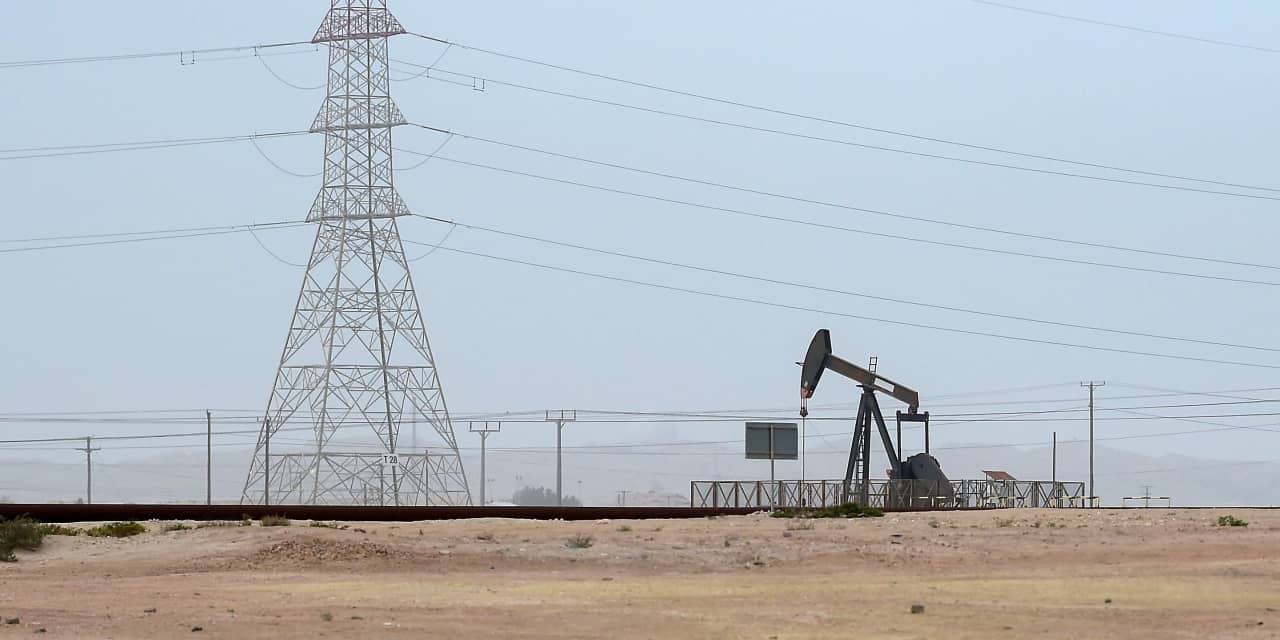U.S. oil futures stretched their gains into a sixth consecutive session on Monday, with prices settling at their highest for the month so far, while global benchmark Brent crude finished with a modest loss.
The mixed trading for oil prices came as traders continued to weigh global demand expectations and prospects for supply disruptions against a backdrop of rising tensions in the Middle East.
Price moves
-
West Texas Intermediate crude
CL00,
for March delivery
CL.1,
CLH24,
edged up by 8 cents, or 0.1%, to settle at $76.92 a barrel on the New York Mercantile Exchange. WTI crude was up a sixth session in a row and marked the highest front-month settlement since Jan. 30, according to Dow Jones Market Data. -
April Brent crude
BRN00,
-0.12% BRNJ24,
-0.12% ,
the global benchmark, fell 19 cents, or 0.2%, to end at $82 a barrel on ICE Futures Europe after a five-session climb. -
March gasoline
RBH24,
+0.22%
added 1.2% to end at $2.37 a gallon, while March heating oil
HOH24,
+0.05%
lost 1.5% to end at $2.92 a gallon. -
Natural gas for March delivery
NGH24,
-0.59%
declined by 4.3% to settle at $1.77 per million British thermal units, the lowest since July 2020.
Market drivers
Expectations of a “higher-for longer” policy by the Federal Reserve are weighing on the demand outlook and have therefore acted as a headwind for U.S. benchmark oil prices recently, Tyler Richey, co-editor at Sevens Report Research, told MarketWatch.
However, Monday’s New York Fed Consumer Survey data showed a drop from 2.6% to 2.4% in the three-year inflation outlook, which was “received as dovish by the markets and helped support the domestic oil market to start the week,” Richey said.
On Tuesday, focus will shift to the U.S. CPI report, he said. A “hot” print would once again be a “headwind for oil prices, while a favorably ‘cool’ print could send WTI futures beyond $80” a barrel for the first time in 2024.
Read: The first big inflation report of 2024 is coming out. Here’s what the CPI is likely to show.
Both Brent and WTI rose more than 6% last week, with gains tied to worries over the potential escalation of the Israel-Hamas war. But concerns appeared to ease somewhat to begin the week, Ewa Manthey and Warren Patterson, commodities strategists at ING, said in a note.
Iran’s foreign minister over the weekend said Tehran had held talks with Saudi Arabia about a political solution to hostilities in Gaza, Reuters reported, and has exchanged messages with the U.S. throughout the four-month Israel-Hamas war.
While there remains a “slim possibility of a ceasefire, the situation is tense, which should keep oil prices highly volatile and vulnerable to headline risk,” Fawad Razaqzada, market analyst at City Index and Forex.com, said in a note to clients.
“‘The extent to which a risk premium should be applied to the Middle East situation remains uncertain, as oil supplies have yet to be significantly impacted by the crisis.’ ”
“The extent to which a risk premium should be applied to the Middle East situation remains uncertain, as oil supplies have yet to be significantly impacted by the crisis, aside from minor disruptions such as rerouting ships around the African continent,” he said. Consequently, even in the event of a cease-fire, he estimates the downside risk for oil to be limited to approximately 5% to 7%.
Meanwhile, trading volumes were relatively subdued due to the Lunar New Year holidays, with Chinese markets closed, the analysts said.
Monthly oil reports from the Organization of the Petroleum Exporting Countries will be released on Tuesday, and from the International Energy Agency on Thursday.
“Attention will be paid to how they will revise their demand outlook in reaction to the global developments,” Ipek Ozkardeskaya, senior analyst at Swissquote Bank, said in a daily note.
On one hand, “the strong U.S. economy and Chinese stimulus measures are positive for the demand dynamics and should support oil prices beyond the geopolitical tensions,” she said. On the other hand, the “significant retreat in global interest rate cut expectations weighs on global demand outlook.”
One thing is sure, Ozkardeskaya said: OPEC will “keep fighting to maintain oil prices,” even as the U.S. pumps a record amount of oil to “counterweigh the price increases that OPEC needs so badly.”
Read the full article here




